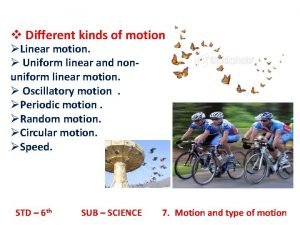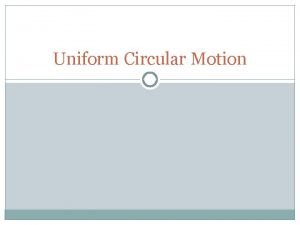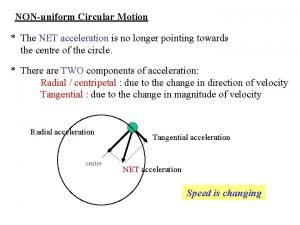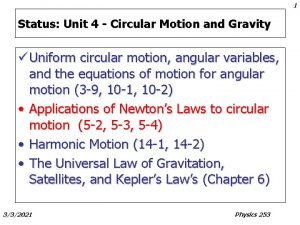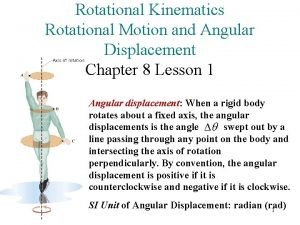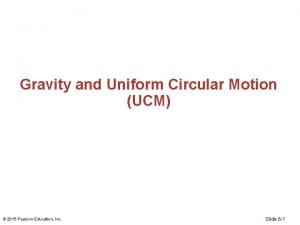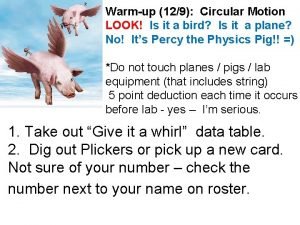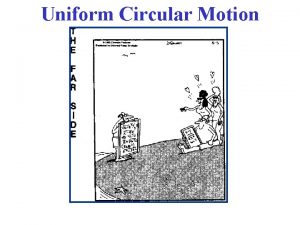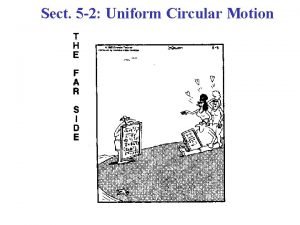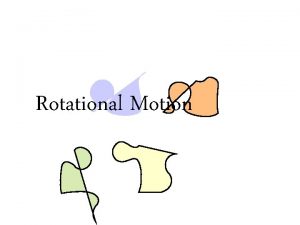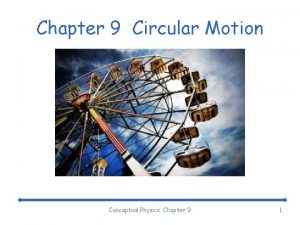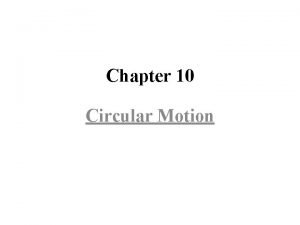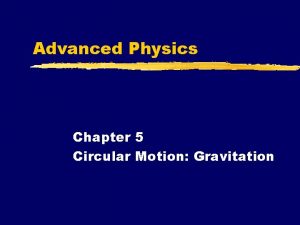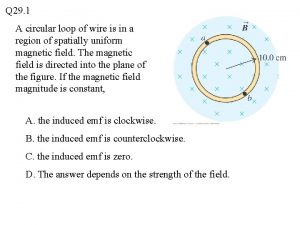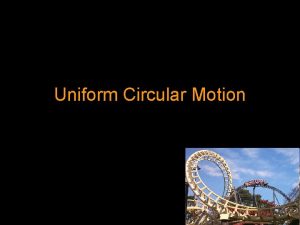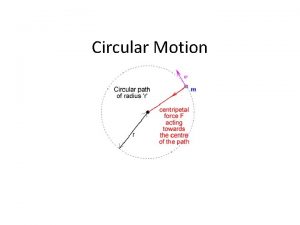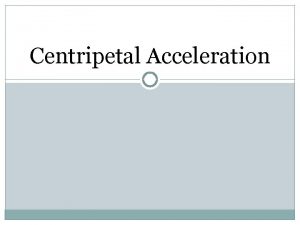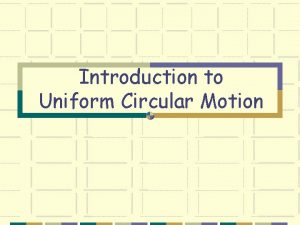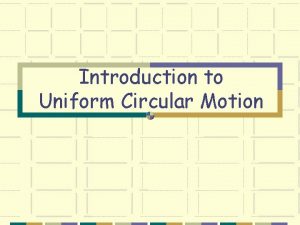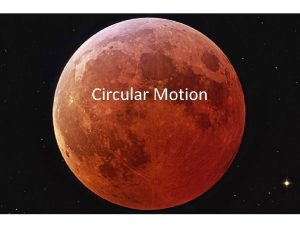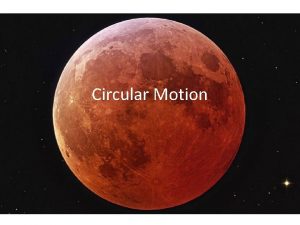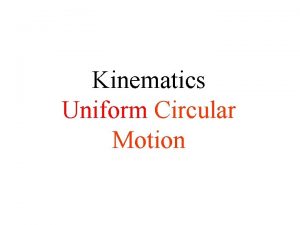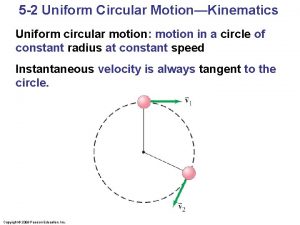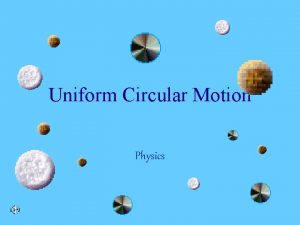CIRCULAR MOTION Chapter 9 Uniform Circular Motion The



















- Slides: 19

CIRCULAR MOTION Chapter 9

Uniform Circular Motion ■ The movement of an object at a constant speed around a circle with a fixed radius is called uniform circular motion. v 1 v 2 r 1 r 2 Velocity is always tangent to the circle. Acceleration is constant and directed toward the center of the circle.

Centripetal Acceleration - 1 ■

Centripetal Acceleration - 2 ■

Examples of Uniform Circular Motion Hammer Throw Satellites Roller Coaster

Circular Motion ■ Circular motion vignettes ■ Science of the Winter Olympics ■ Science of Golf

Circular Motion Activities ■ Uniform Circular Motion Interactive – Complete Activity ■ Race Track Interactive

Universal Gravitation ■

Satellite Motion ■

The Relation Between G and g ■

Gravitation Videos ■ How to Think About Gravity ■ Gravitation Tutorial

KEPLER’S LAWS

Kepler’s Laws ■ In the 1600 s Johannes Kepler proposed three laws of planetary motion based on observational data. The laws are: – The path of the planets about the sun is elliptical in shape, with the center of the sun being located at one focus. (The Law of Ellipses) – An imaginary line drawn from the center of the sun to the center of the planet will sweep out equal areas in equal intervals of time. (The Law of Equal Areas) – The ratio of the squares of the periods of any two planets is equal to the ratio of the cubes of their average distances from the sun. (The Law of Harmonies)

Law of Ellipses ■ The path of the planets about the sun is elliptical in shape, with the center of the sun being located at one focus. (The Law of Ellipses)

Law of Equal Areas

Law of Harmonies ■ Planet Period (years) Avg. Distance (AU) Mercury 0. 241 0. 39 0. 98 Venus 0. 615 0. 72 1. 01 Earth 1. 00 Mars 1. 88 1. 52 1. 01 Jupiter 11. 8 5. 20 0. 99 Saturn 29. 54 1. 00 Uranus 84. 0 19. 18 1. 00 Neptune 165 30. 06 1. 00 Pluto 248 39. 44 1. 00

Kepler’s Laws Activities ■ – – – Planetary Orbit Simulator Which planet has the most eccentric orbit? Which planet’s orbit is closest to circular (e = 0)? At which point is each planet going fastest? Slowest? ■ Kepler’s 2 nd Law Interactive ■ Orbits and Kepler's Laws

Quiz on Wed. 11/4/15 ■ Momentum (Chapter 7) ■ Energy, Work and Power (Chapter 8) ■ Circular Motion (Chapter 9) ■ Universal Gravitation (Chapter 12)

Today’s Lab ■ Read the tutorial Definition and Mathematics of Work ■ Do the interactive Stopping Distance and complete the worksheet
 Uniform and non uniform linear motion
Uniform and non uniform linear motion Uniform circular motion lab
Uniform circular motion lab Non uniform circular motion
Non uniform circular motion Learning objectives for newton's laws of motion
Learning objectives for newton's laws of motion Circular motion
Circular motion Dynamics of uniform circular motion
Dynamics of uniform circular motion Acceleration vector projectile motion
Acceleration vector projectile motion Si unit of angular velocity
Si unit of angular velocity A car turns a corner on a banked road
A car turns a corner on a banked road Centripetal acceleration symbol
Centripetal acceleration symbol What is uniform circular motion
What is uniform circular motion A particle is moving in a circle of radius r
A particle is moving in a circle of radius r Circular motion formulas
Circular motion formulas How do you classify uniform and non-uniform mixtures?
How do you classify uniform and non-uniform mixtures? Examples of pure substances
Examples of pure substances Contoh aliran seragam
Contoh aliran seragam Chapter 9 circular motion answers
Chapter 9 circular motion answers Chapter 10 circular motion
Chapter 10 circular motion Chapter 5 circular motion gravitation
Chapter 5 circular motion gravitation A circular loop of wire is in a region of spatially uniform
A circular loop of wire is in a region of spatially uniform
